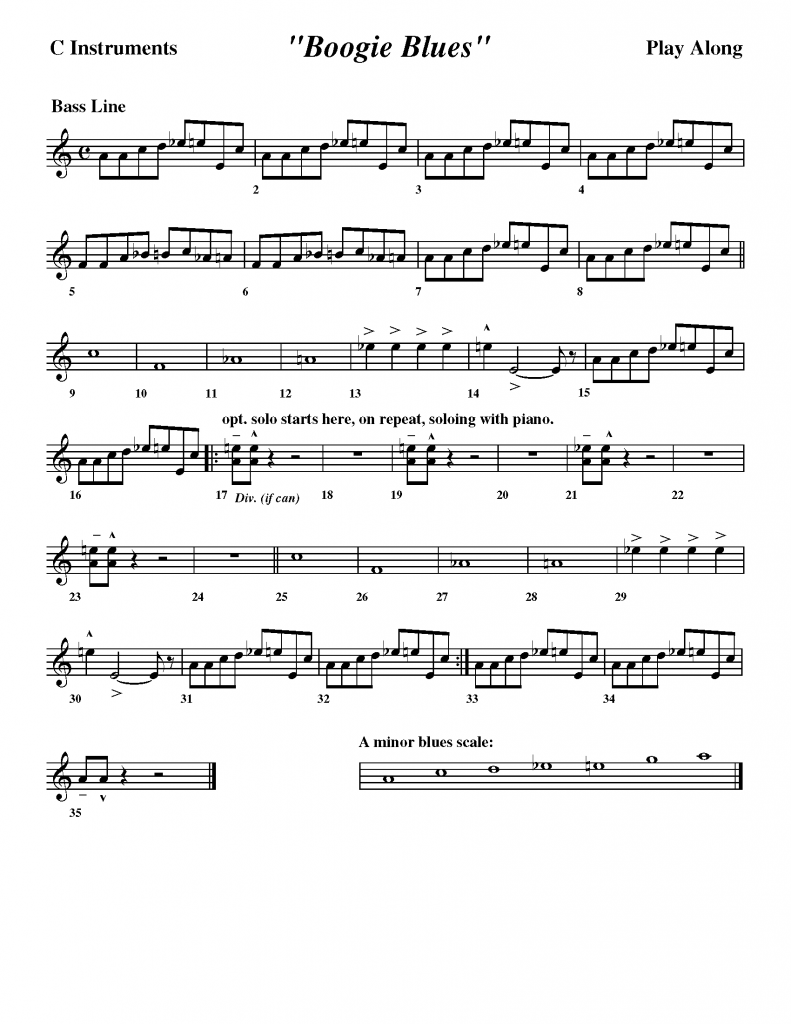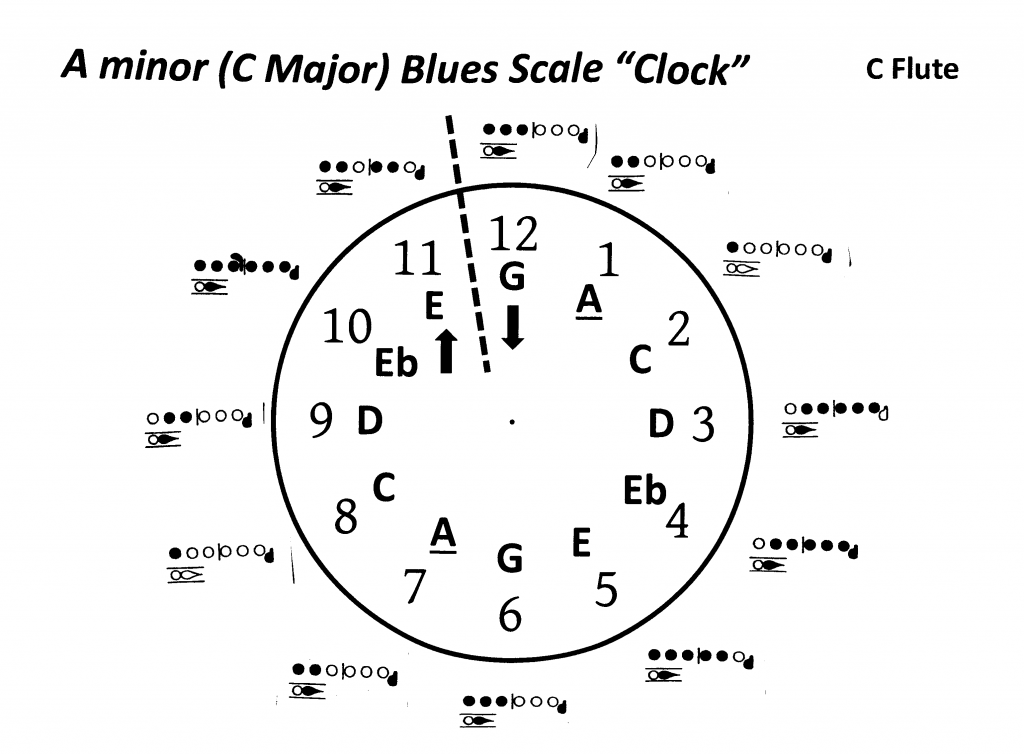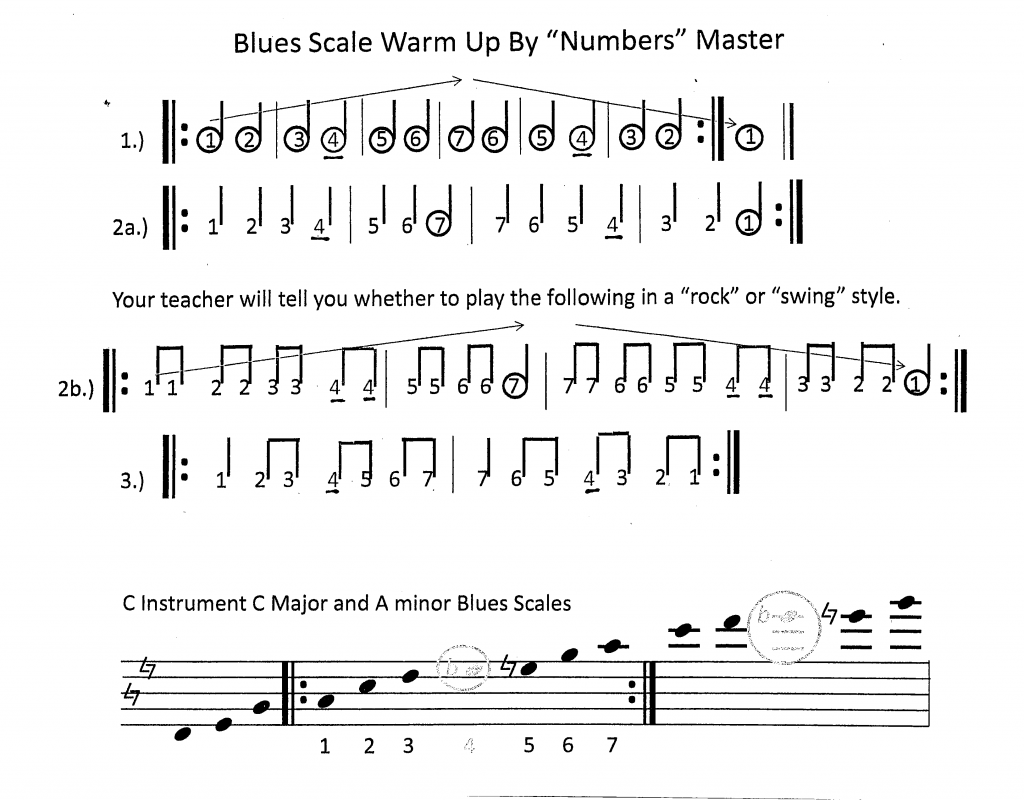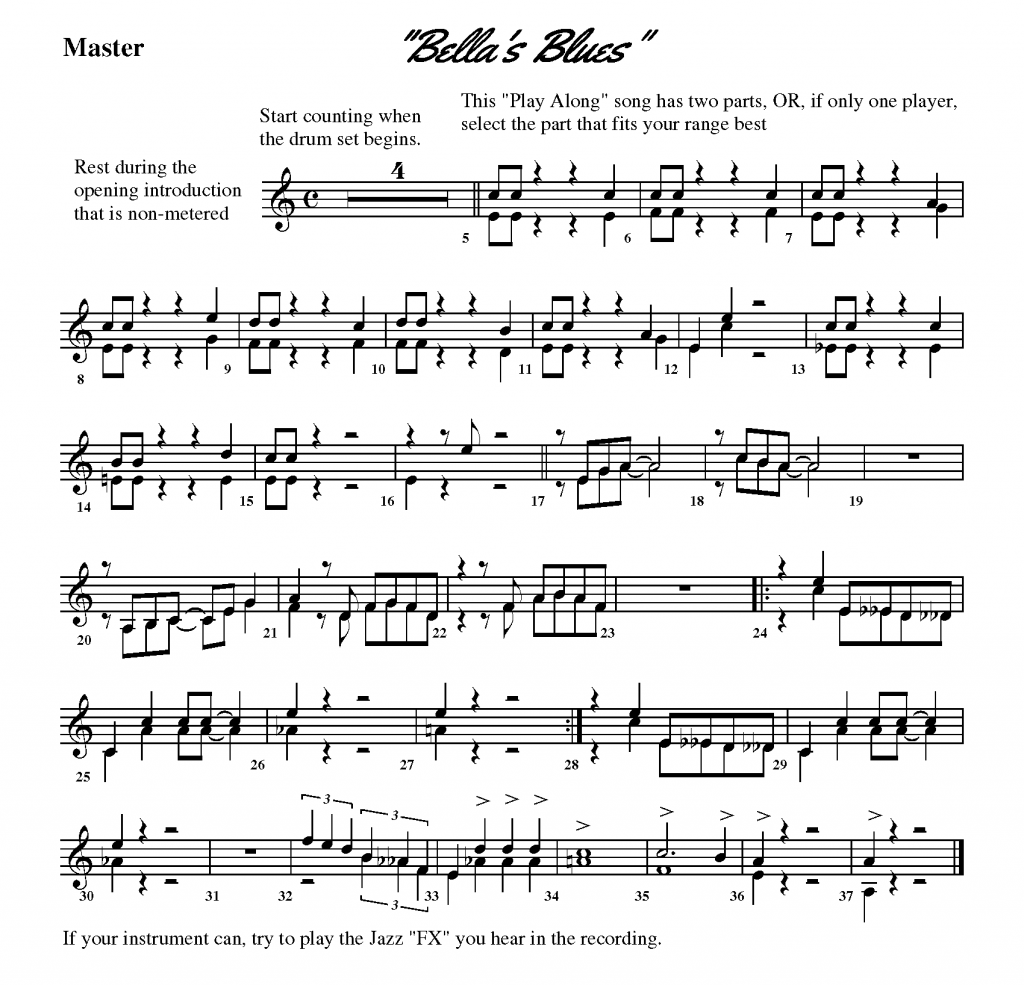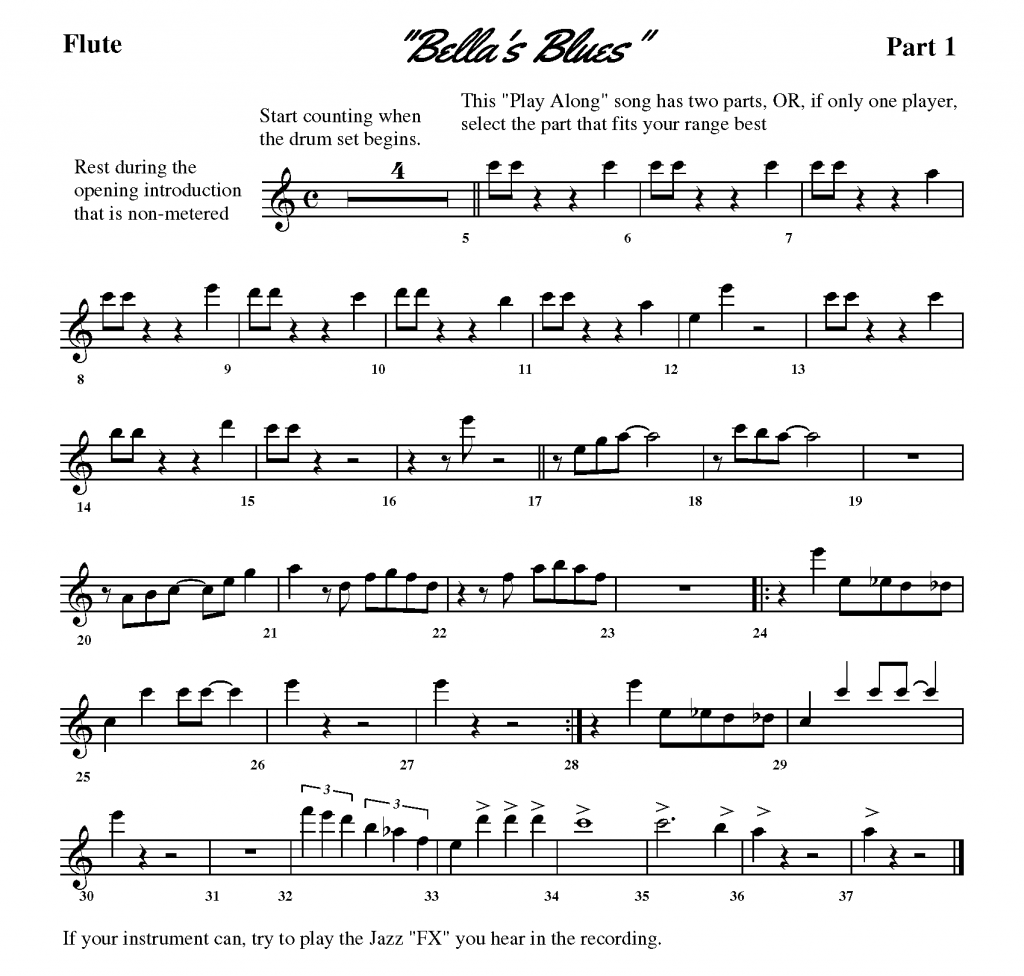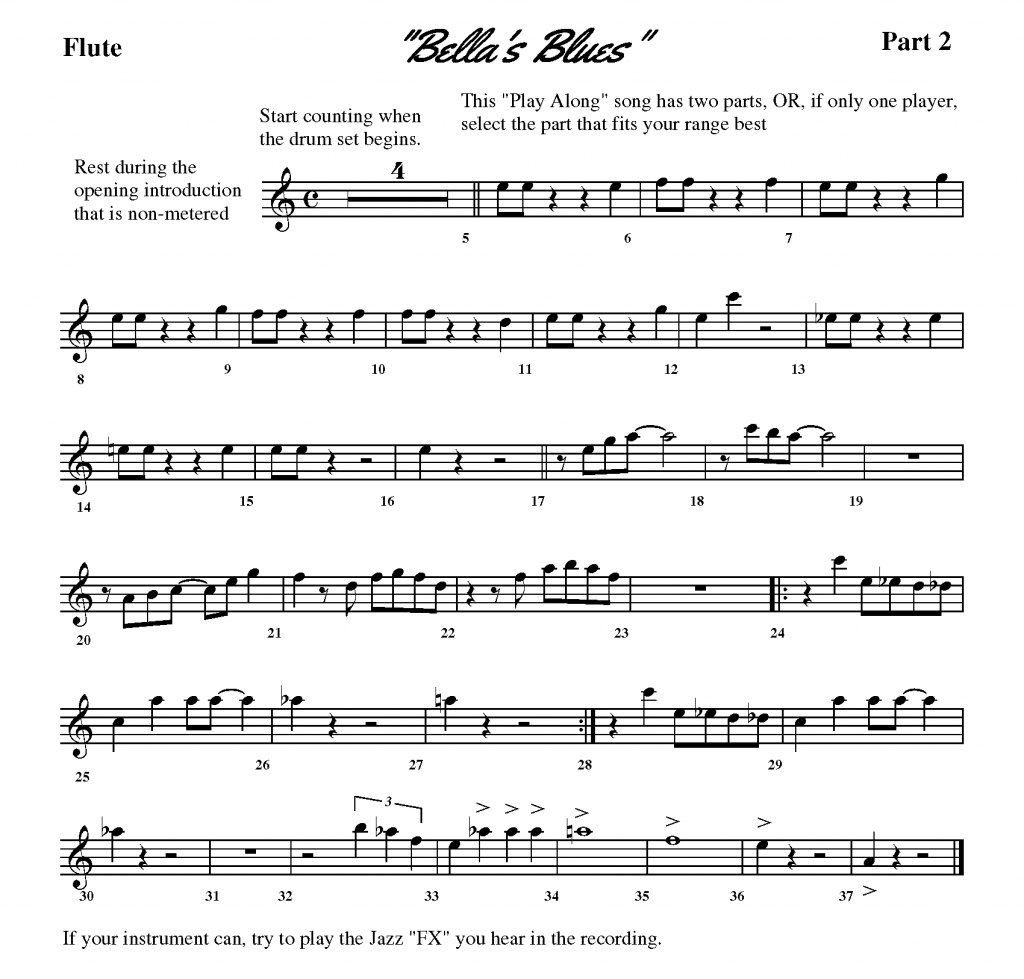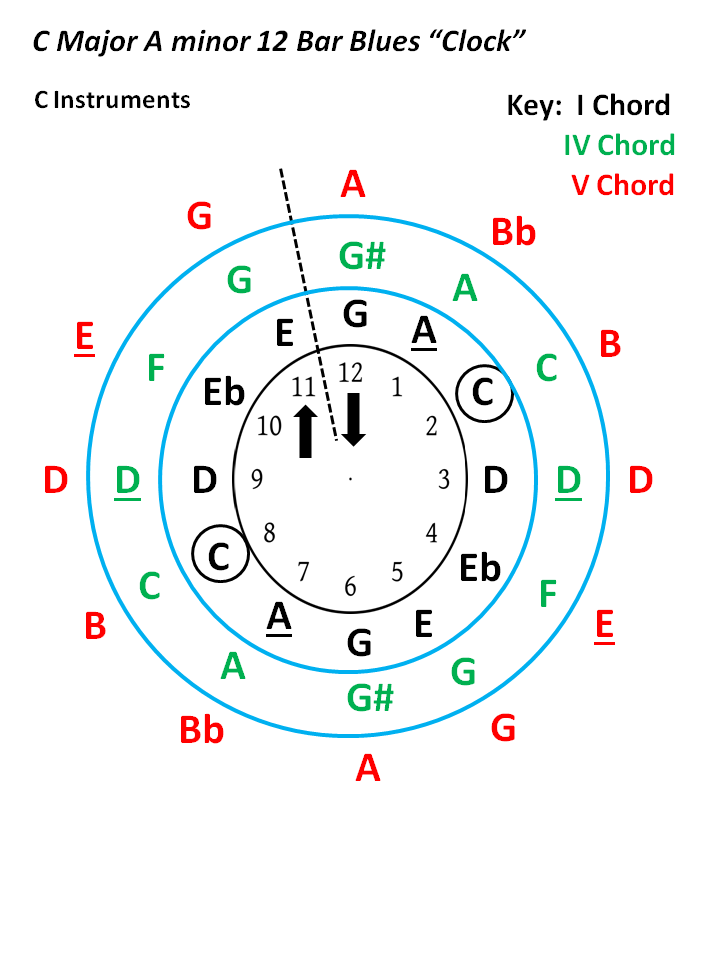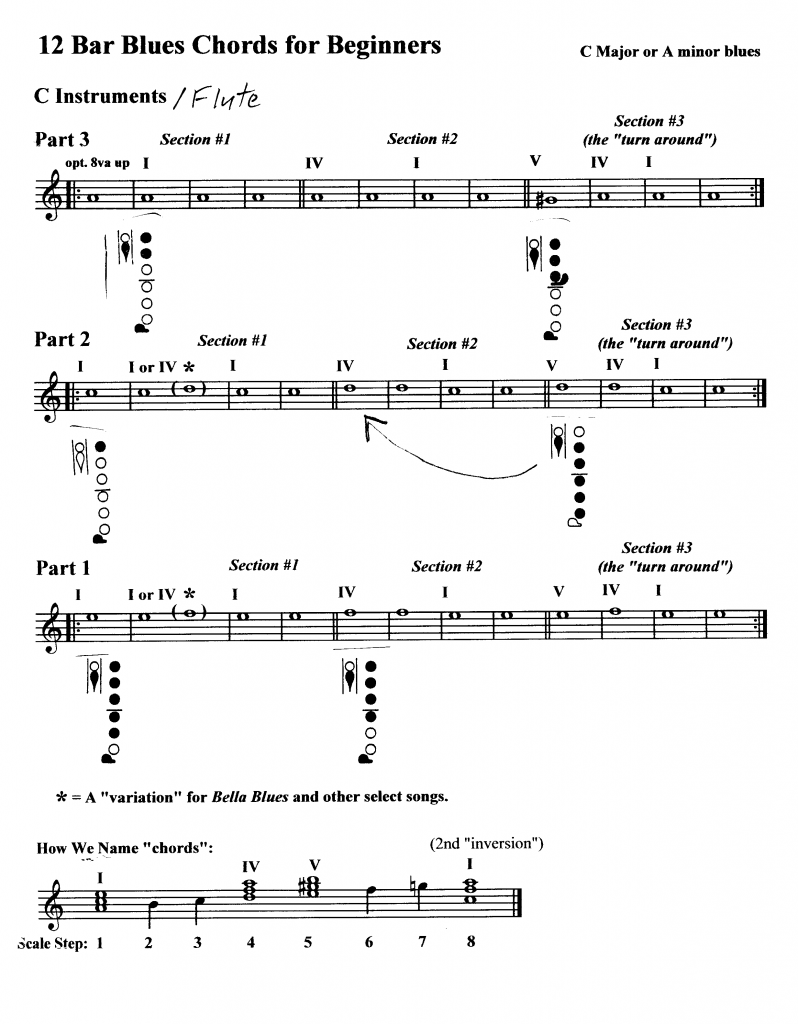Project Title #16: “Boogie Blues” “A” minor blues scale
Instructions: The “Boogie Blues” is from a collection of arrangements used from the Alfred’ Kid’s Drum Set Course”, an outstanding resource for “just learning” drum set players. It is arranged using the standard “blues format” for 1 or 2 players. Play it in a “rock” style using a slower than normal “boogie woogie” tempo. The bass line is written “as is” on the MP3 recording. I thought it would be a “good” technique exercise to keep the concert “E” octave skip in, in order for students to practice rapid embouchure re-setting and pitch centering. If you wish, you can repeat the same concert “E” on the 7th eighth-note, of each “I” chord measure, to make the bass line a little easier to play. The improvisation solo section from bar #’s 17 to 32 is played two times. After that section is repeated, just “tag on” the last three measures. Use your C major / A minor blues scale “clock” or other blues scale aide sheet for the correct notes to solo with, or, there is an “A” minor blues scale outline at the bottom right of your music page. Use whichever is most convenient for you.
Another skill that “Blues Rap” allows you to work on ties in with another basic rule of improvisation; “If it does not sound good, DON’T PLAY IT!” In 6 bars of the solo (bar #’s 25 – 30) additional chords, other than the “blues” chords in “A” minor, are added. So, some of your blues scale notes will not fit with certain chords in those measures. NO PROBLEM, the fix is simple. If you play a note that sounds a “little out of place” (or even terrible), all you need to do is slide one note higher or lower in your “A” minor blues scale, and the new note always will fit (or sound good). With the “blues clock”, you would just slide one hour (forward or backward) to achieve the same results. This technique can be used for almost all improvisation solos. It is also an excellent way to train the young musicians ear and to get them listening while soloing.
Note: If you want to improvise using the chord changes, a “3 Ring Color Coded Blues Clock” (in “A” minor) is also provided. In bar #’s 25 through 30, improvise using the I chord, remembering the “new rule” we just talked about above.
Click below for all band parts:
Project Title #17: “Bella’s Blues” “A” minor blues scale
Instructions: This “Play Along” project also has two parts. Two musicians can team up, or if there is only one player, perform the part where the “range” best suits you on your instrument. There is a conducted, “non-tempo” introduction to set up the chart. It should sound familiar to you, but do not try to play along with it. After the introduction, you will hear 4 bars of drum set with electric bass played “in time”. Count your 4 bars of rests when you first hear these two instruments enter, and join them at bar #5. As the title indicates, play your part in a “swing” or slow blues style. In the recording you will hear (especially in the brass) a lot of jazz “FX”. Before playing or recording your solo, listen carefully to the jazz band playing on the resource track. Match the note lengths and instrument “inflections” as best you can. Also, try to figure out (on your own) how to perform as many of these jazz band “special effects” that you can. This one should be a lot of fun.
There is a common “blues format” variation in this particular song. It occurs the second measure ONLY of each full 12 bar blues phrase. The “I” chord is replaced with the “IV” chord. It is a quick, one bar, chord change and you could easily just continue the normal four bars of the “I” chord and no one would notice any difference. As you play the song though, see if you can hear the change to the “IV” chord in the second bar, and then back to the “I” chord in the third.
For an option to “Bella’s Blues”, let’s try something a little different. For back up, the ensemble (or non-soloists) can play the “back up chords” using the “12 Bar Blues Chords for Beginners” sheet. Students will be assigned the 1st, 2nd, or 3rd part and once the soloist begins, “back up” players will softly play the chords using whole notes (4 counts each) in the background. If you have less than three students playing “back up” your teacher will assign you the parts he or she wants you to play. You will only be playing the 12 bar blues progression back ground chords twice. The ending (when the third soloist performs) changes to the four “turn around” chords being played twice. That is the third section of your standard 12 bar blues, or the “V”, to the “IV”, and then to the “I” chord twice. Then, a “IV” chord is played once, going to an extended “V” chord (for three measure) then the chords “I” to “IV” (one bar each) and finally back to “I”, for the down beat of count 1 only.
